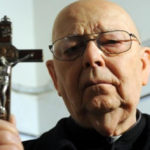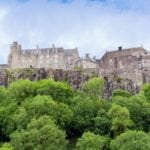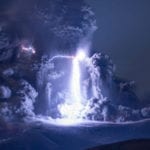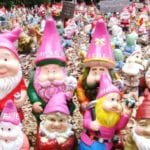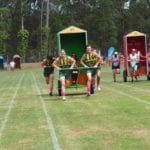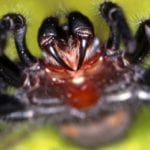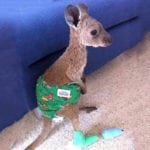 Politics
Politics  Politics
Politics  Weird Stuff
Weird Stuff Ten Bizarre Facts About The Doge Meme
 Our World
Our World 10 Ways Your Christmas Tree Is More Lit Than You Think
 Movies and TV
Movies and TV The 10 Coolest Stars to Set Sail on The Love Boat
 History
History 10 Things You Didn’t Know About the American National Anthem
 Technology
Technology Top 10 Everyday Tech Buzzwords That Hide a Darker Past
 Humans
Humans 10 Everyday Human Behaviors That Are Actually Survival Instincts
 Animals
Animals 10 Animals That Humiliated and Harmed Historical Leaders
 History
History 10 Most Influential Protests in Modern History
 Creepy
Creepy 10 More Representations of Death from Myth, Legend, and Folktale
 Politics
Politics 10 Political Scandals That Sent Crowds Into the Streets
 Weird Stuff
Weird Stuff Ten Bizarre Facts About The Doge Meme
 Our World
Our World 10 Ways Your Christmas Tree Is More Lit Than You Think
Who's Behind Listverse?

Jamie Frater
Head Editor
Jamie founded Listverse due to an insatiable desire to share fascinating, obscure, and bizarre facts. He has been a guest speaker on numerous national radio and television stations and is a five time published author.
More About Us Movies and TV
Movies and TV The 10 Coolest Stars to Set Sail on The Love Boat
 History
History 10 Things You Didn’t Know About the American National Anthem
 Technology
Technology Top 10 Everyday Tech Buzzwords That Hide a Darker Past
 Humans
Humans 10 Everyday Human Behaviors That Are Actually Survival Instincts
 Animals
Animals 10 Animals That Humiliated and Harmed Historical Leaders
 History
History 10 Most Influential Protests in Modern History
 Creepy
Creepy 10 More Representations of Death from Myth, Legend, and Folktale
10 Amazing Stories Of Australian Paranormal Phenomena
Whenever Australia comes up in a conversation, we usually remember to mention how absurdly dangerous the place seems to be. We talk about its diverse, dangerous fauna, and the harsh, unforgiving climate. However, what we often forget is that the continent also has a rich history of creepy myths and ghost stories. From UFO sightings to government secrets and frightening urban legends, Australia can scare you in almost as many ways as its animals can maim you.
Let’s take a look at some of the stranger stories from the “most dangerous country in the world.”
10 Fisher’s Ghost
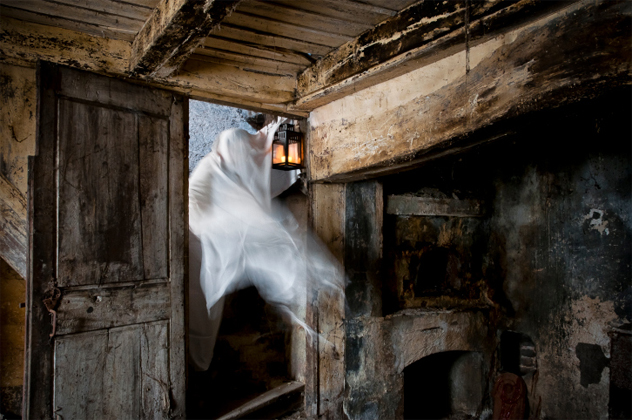
The legend of farmer Frederick Fisher is one of the most popular ghost stories in Australia. On a calm June evening in 1826, Fisher left his house in Campbelltown to run some errands, never to return. He was gone without a trace, leaving no clues that could explain his sudden disappearance.
Four months after Fisher vanished, a local resident stumbled into a Campbelltown hotel, pale and shaken to his very bones. He told the assorted audience that he had just encountered the ghost of Frederick Fisher. The spectral farmer had been sitting on a fence by the road, pointing with his finger at a paddock near the river that ran nearby. Then, the startled man watched the apparition fade away in front of his eyes.
The man who had seen the ghost was a wealthy and well-respected member of the community, so the police decided to investigate the paddock the ghost had pointed at. To their shock, they found the body of Frederick Fisher, dead and hidden from view. His murderer was soon found to be one George Worrall, Fisher’s neighbor and friend who had been taking care of his legal matters in the past. Worrall had already raised some eyebrows after Fisher’s disappearance, as he told everyone that Fisher had sailed to England and soon started selling the poor farmer’s belongings. The emergence of the body soon caused Worrall to confess, and Fisher could finally rest in peace.
Or could he? Some sources say that Fisher quite liked being a ghost . . . to the point that he still haunts the hotel mentioned in the legend today.
9 Wycliffe Well
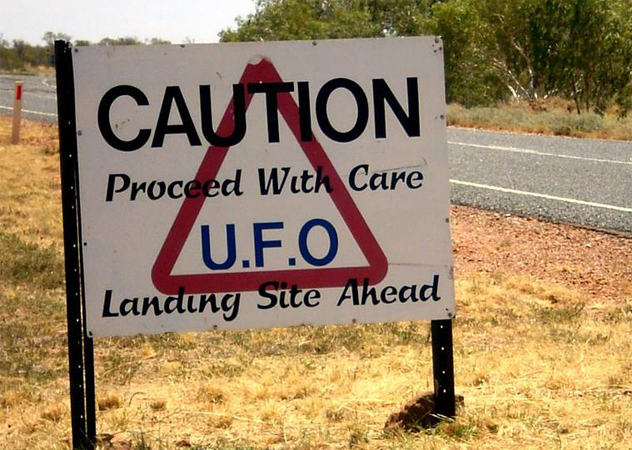
Wycliffe Well is a roadhouse and holiday park near Wauchope in the Northern Territories. The area is said to be one of the biggest hotspots for UFO activity in the entire continent. There have been many reported sightings in recent decades by locals and visitors alike, and this has made the relatively remote location surprisingly popular among UFO enthusiasts and the occasional tourist.
Why do UFOs congregate in Wycliffe Well? Nobody knows for sure. Some say the place lies at an intersection of two major LEY lines, which attract alien vessels and cause them to pass the place quite often. Others maintain the mysterious sightings are actually secret experiments by the Pine Gap US military base, which, according to some theories, is Australia’s answer to Area 51. Others still say the UFOs, if stories of them are true at all, are merely the desert sun’s reflection on birds and other tricks of light.
Whatever the truth may be, the roadhouse—stuffed to the brim with alien kitsch and UFO memorabilia—certainly benefits from the rumors.
8 The House Of Miracles
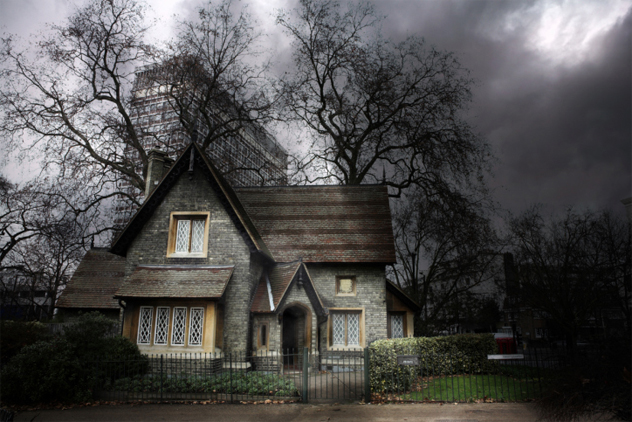
In the suburbs of Sydney, there is a small house where miracles are said to happen. In 2006, three months after their 17-year-old son died in a car accident, George and Lina Tannous were shocked to notice that the walls of the deceased boy’s room were mysteriously weeping aromatic oil. They soon became convinced that the oil was of supernatural origin, sent by their son from heaven to communicate with them.
As news of the mysterious “House of Miracles” started spreading, its fame grew and the faithful came knocking at the Tannous family’s door. They even noticed that the oil, combined with prayer, seemed to have healing properties. Pilgrims kept on coming, so the Tannous turned their house into a 24-hour chapel. A local Catholic priest became convinced that the phenomenon was clearly a miracle, and even started anointing people with the oil. Even Mr. Tannous’ trouble with the law in 2010 (curiously, he had been involved in a forgery case) didn’t stop people from coming.
The miracle oil, which was tested in 2007 and found to be a combination of oil and water, is still on the walls of the house today, and its true origins remain a mystery. The Tannous maintain its origin is divine, but although they have always refused to take any money from visitors, the president of the local sceptics’ association has his own suspicions about the mystery substance’s authenticity: He says the House of Miracles looks a lot like someone had been, and we quote, “running around the house dabbing oil and water on the walls.”
7 Gosford Glyphs
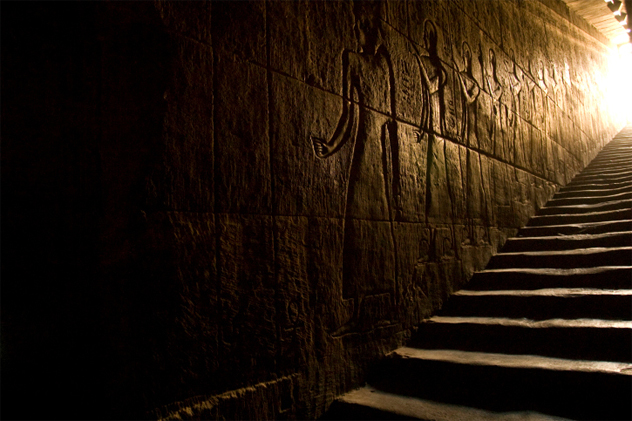
The Gosford Hieroglyphs, or “Gosford Glyphs” for short, are a series of strange, deep-cut markings on a rock in Hunter Valley, New South Wales.
Since their discovery in the 1970s, this set of 300 pictures has achieved widespread notoriety due to their resemblance of ancient Egyptian hieroglyphs. What’s more, the area also seems to have a large, labyrinthine structure of strangely straight caves and tunnels underneath the stone. Does this mean that ancient Egyptians somehow managed to travel to Eastern Australia, and brought their rock-working tools along for the ride? How did they manage that? Was it magic? Were they helped by aliens?
It depends on who you ask. Steven Strong, the leader of a group of amateur archeologists researching the area, says that the amount of existing evidence (along with a second series of glyphs that his team has recently found) means the area still clearly has many strange mysteries to hide. Meanwhile, Egyptology expert Boyo Ockinga, from Sydney’s Macquarie University, has stated that the site has nothing to do with Egyptians. According to him, the glyphs are poor imitations that were most likely made by Australian soldiers who visited Egypt during World War I and developed a fascination with the culture.
6 Picton
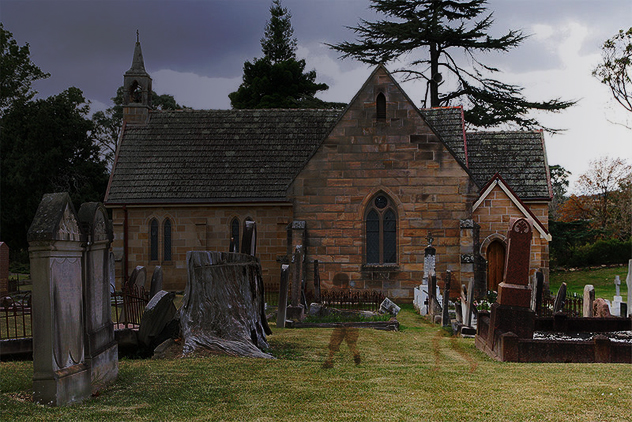
The small, rural town of Picton is located 80 kilometers (50 mi) southwest of Sydney. It’s a quaint little township, full of small-town charm and named after one of the generals at the Battle of Waterloo. It’s so quaint, in fact, that many of its residents choose to stay even after life has left them. Picton is said to be crawling with ghosts, from strange, spectral ladies that move shopkeepers’ signs around to invisible swimmers by the railway viaduct. The maternity hospital is haunted by ghostly, crying babies and an evil matron who attempts to strangle people at night. The Imperial Hotel’s jukebox sometimes starts to play by itself, even if it isn’t plugged in.
Some of the more well-known of Picton’s ghosts are the children who haunt the (surprise, surprise) cemetery. Two ghostly kids, a boy and a girl, apparently stalk the burial grounds dressed in old-fashioned clothes, disappearing behind the headstones and appearing in photographs of the otherwise empty cemetery.
The most famous of Picton’s specters, however, lurks in the Mushroom Tunnel, an abandoned railway tunnel that is thought to be haunted by the ghost of Emily Bollard, a woman who was taking a shortcut through the tunnel in 1916—only to be greeted by an oncoming train. The locomotive struck her and carried her mangled corpse in its cowcatcher all the way to the town’s railway station. According to legend, you can still encounter her ghost in the tunnel, forever trying to run from her oncoming doom.
5 Hawkesbury River Monster
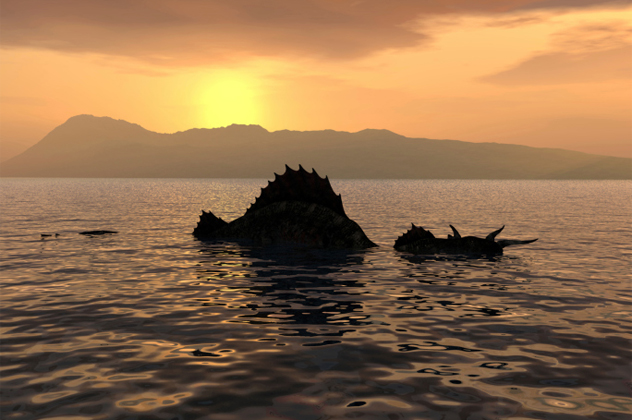
Hawkesbury River, a wide and murky New South Wales estuary, is Australia’s answer to Loch Ness. According to cryptozoology enthusiasts and local historians alike, there is some evidence that Hawkesbury is inhabited by one or more giant, water-dwelling monsters. Eyewitnesses have reported these creatures to be as long as 24 meters (79 ft) and, much like “Nessie” of Loch Ness, the monster is said to resemble an aquatic dinosaur, most likely a plesiosaur.
Although the Hawkesbury River monster has reportedly been glimpsed by the locals at least since the 1960s (and possibly even longer, as Aboriginal legends place similar creatures in the area), no one has ever been able to take a photograph of one. If the monster is indeed real, this may change in the future: A particularly enthusiastic monster hunter called Rex Gilroy is currently on a quest to catch the creature on film.
4 The Glowing Cross Of Lismore
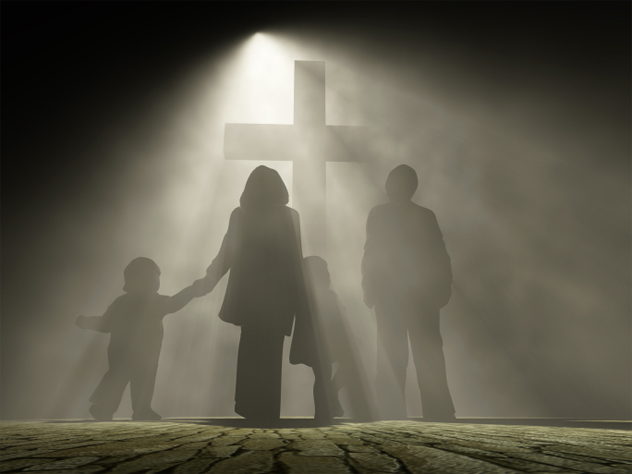
In 1907, a tragic railway accident ended the life of William Steenson, a young railroad worker who was crushed by a runaway carriage he was trying to stop. He was buried in North Lismore Pioneer Cemetery near the town of Lismore, and a large, stone cross was set to mark his grave.
During World War I, the locals started noticing something strange. The cross on Steenson’s grave had mysteriously started shining brightly, as if it was a giant light bulb. Although many residents were aware of the mysterious glowing cross, they kept quiet about it for decades because they didn’t want the town overrun by people flocking to see this miracle. However, the news eventually got out in 1978, and people all over the world started trickling into the town to witness the mysterious “fire cross.”
The stone glowed just occasionally at first, but it seemed to gain power with time, until it eventually shone all the time (although its glow was only really visible from dusk until dawn). Sadly, once it became famous, religious fanatics and tourists started vandalizing the cross and chipping away pieces of it as souvenirs. Skeptics tried to explain the stone’s strange properties as tricks of the light and scientists analyzed it, but no reason for its luminescence could ever be found. In fact, chances are that the mystery will never be solved: At the height of its popularity in 1986, the stone suddenly vanished and was never seen again. Presumed stolen, an exact replica was constructed from the same materials and mounted in the exact same way as the old one.
It never glowed.
3 Tomago House
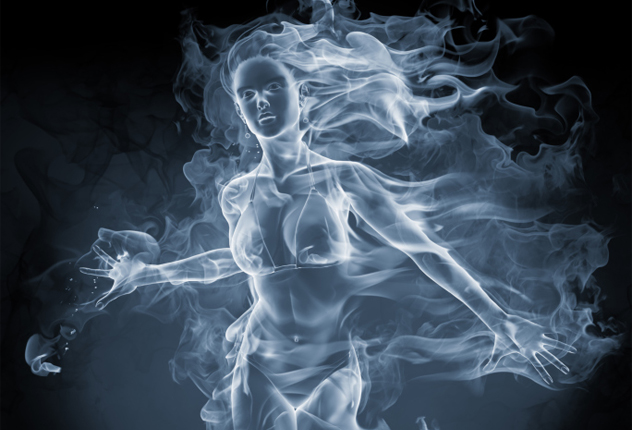
These days, Maria Windeyer, the lady of Tomago House, enjoys sitting in her rocking chair and looking after her cellars. She is often seen by visitors, to the point where she’s something of a local attraction.
Maria Windeyer, it should probably be mentioned, passed away in the 19th century.
Tomago House is a well-known main building of a large vineyard in Newcastle, New South Wales. The construction of the site began in 1840, but its builder, barrister Richard Windeyer, passed away only seven years later. He was survived by his wife, Maria, who was now tasked with completing the site and making it profitable. Maria excelled at this task, spending the rest of her life looking after Tomago House.
Her life and spirit became so tied to it that some say her interest in the property didn’t stop with her death. To this day, many say they have glimpsed the elderly woman in the cellars, or enjoying fresh air in her rocking chair on the porch of the house.
2 The Coogee Virgin
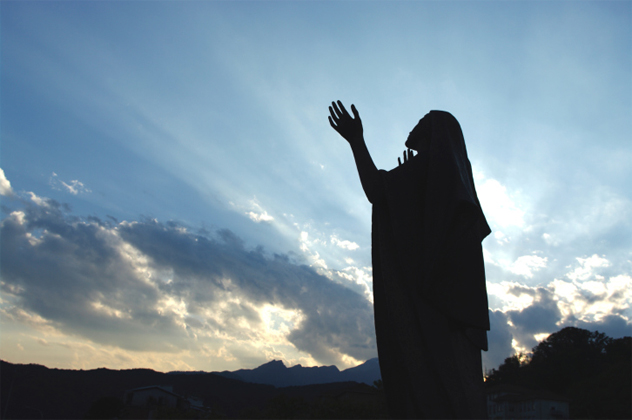
Coogee Beach near Sydney is a fun place, as most Australian beaches tend to be (unless you’re eaten by a shark or stung by a box jellyfish). There, you can surf, swim, sunbathe . . . and, apparently, meet the Virgin Mary.
The Coogee Virgin is a strange, hazy apparition that forms in the meeting point of two differently colored strips of fence near a certain cliff path. First seen in 2002, the Virgin is a peculiar optical illusion that happens to look almost exactly like the classic illustrations of the Virgin Mary. The Catholic Church has dismissed the phenomenon as a simple trick of the light and, strangely, almost no one is contesting that claim. However, the fact that this particular optical illusion would form that exact figure in such a photogenic place is seen as miraculous by many.
The Virgin is generally visible on sunny days, between 3:00 and 4:30 P.M. She has a habit of drifting in and out of view, depending on how the light falls on her usual spot.
1 The Guyra Dam Incident
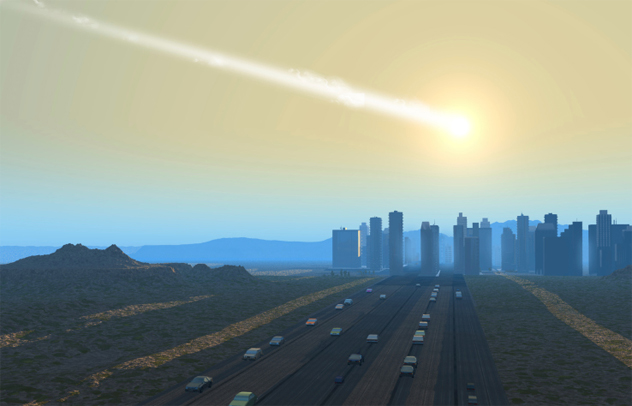
In December 1999, an unidentified flying object fell in the water supply dam of Guyra, a small town located in northeastern New South Wales. The object had flattened a 16 by 6 meter (52 by 20 ft) area of reeds, before plunging into the water and eventually sinking in the mud underneath. The incident received both national and international coverage, sending the small town into a frenzy of media and police interference.
Initial headlines immediately called the phenomenon a UFO in the extraterrestrial sense of the word. Experts were more reserved, but uncertain about what the object actually was. Theories ranged from meteors to space debris to frozen raw sewage from a passing aircraft—a nauseating possibility, considering the object fell in a water reservoir. An eyewitness emerged, but he was uncertain as to what the object actually was. All he knew that it was fiery, broke into pieces as it flew, and may have been “space debris” of some kind.
In the end, the search to solve the Guyra mystery was called off. The truth about the incident—at least, the official truth—is that the strange object was a golf ball-sized meteorite that had buried itself deep beneath the water supply. However, no attempts to retrieve the object and confirm this theory have been made.
+ Raymond Terrace
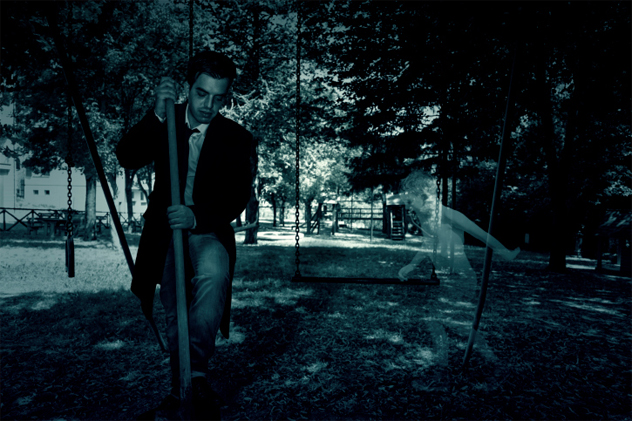
Much like Picton, Raymond Terrace is said to be one of the more notorious Aussie towns if you want to see ghosts. It has several haunted houses and spots, with ghosts ranging from classic “white ladies” looking for their murderers to ghost houses and haunted graveyards. Rumors even say that the town’s church has aborted fetuses buried in its walls, which is why you can hear faint crying from the building’s fireplace at night.
Due to its reputation, the town has been subject to all kinds of ghost tours that cover the more notable sites of haunting and tales of terror. According to their operators, these tours have been both popular and successful in glimpsing the paranormal. One particularly interesting incident saw a tour guest helping himself to a beer, when he felt a paranormal presence in the room. Saying, “I know you’re here,” he poured the beer and left the room for a while—only to find the glass empty when he returned. Although this was probably the work of another person who wandered in and rescued the poor, abandoned beverage, it is tempting to think that this was a genuine paranormal incident. After all, wouldn’t it be nice to know that even in the afterlife, we can stop for a while and appreciate a good beer?
Pauli Poisuo also writes for Cracked.com. Why not follow him on Twitter?

